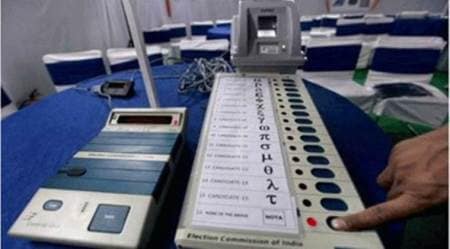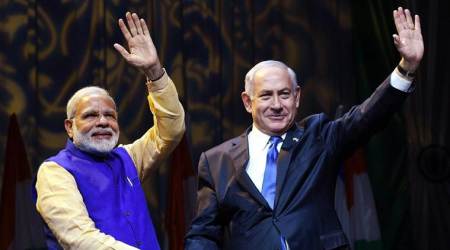 A scene from Mahanirvan (1974), written and directed by Satish Alekar and produced by the Theatre Academy. The play ran for over 300 shows.
A scene from Mahanirvan (1974), written and directed by Satish Alekar and produced by the Theatre Academy. The play ran for over 300 shows.
Just like the actors, the set and the script change with every new performance on the stage, Marathi theatre has undergone changes in the last two decades in terms of its reach, the subjects, the audience and various other aspects.
Revisiting the Past
Satish Alekar, senior Marathi playwright, actor, theatre director, and founder-member of the Theatre Academy of Pune, points out that the early 1990s was a period when the effects of liberalisation could be seen in the Marathi theatre industry. “The industry became more articulated and the actors, more focused. On the flipside, we used to have a full-time job along with theatre, while theatre artists in the later period did not have jobs. During our time, plays like Ghashiram Kotwal and Mahanirvaan had more than 500 and 300 shows respectively; the plays in the later period struggled to touch 100 shows,” says Alekar.
Gajanan Paranjape, who has been associated with the Marathi theatre industry for over four decades, says 20 years ago, theatre was going through a transition. The impact of TV had just begun to reflect on the theatre industry. At the same time, liberalisation had also led to a new sensibility as well as a new language of theatre. “Theatre artistes began to get a chance in films and TV…,” he says.
Some of the theatre groups that were active 20 years ago include the Progressive Dramatic Association, Rangdeep, Theatre Academy, Natya Aradhana and Jaagar, among others.
Changing Tides
Praveen Bhole, professor and head, Lalit Kala Kendra (Centre for Performing Arts), says that unlike earlier times, when the artistes used to regard theatre as a part-time hobby, people have started looking at it as a full-time profession. “It is a positive sign,” he says.
“The themes, content and stories of Marathi theatre in the past pertained largely to the middle-class. The theme of professional Marathi plays now goes beyond ‘drawing room’ and the acting style has changed; from being semi-realistic, it is now inspired by folk theatre and slapstick,” Bhole says.
 A scene from The Balancing Act by IAPAR, which was performed in Spain recently.
A scene from The Balancing Act by IAPAR, which was performed in Spain recently.
The access to information on the internet, according to Prasad Vanarase, founder-director of the International Association for Performing Arts and Research (IAPAR), has allowed more experimentation and introduced unknown writers from India and abroad. It has given access to world literature, which reflects in the choices young actors make while choosing a script.
Vanarase adds that in the past two decades, theatre has benefited from the emergence of internet. In the age of social media, various promotional strategies are used for online publicity, he says. However, he points out, “Along with TV, online entertainment is also available, and theatre has to compete with all of it.”
The Way Forward
Alekar says those interested in theatre are going the extra mile to learn the art. Citing an example, he says that in 1996, the Lalit Kala Kendra got 20 applications for 30 seats. But the scene has changed now, he says. This year, more than 300 applications were received for 30 seats, which included over 150 applicants for 10 theatre seats. “And 95 per cent applicants are from small towns,” he adds.
Bhole points out that intercollegiate theatre in Pune is thriving and witnessing many experiments in story-lines and presentations. Many amateur groups are emerging, and attempts to perform beyond proscenium are taking place. Young theatre artistes can also benefit from the SMART (Strategic Management in the Art of Theatre) programme, jointly offered by India Foundation for the Arts, India Theatre Forum and Junoon. Besides, there are also platforms such as the Vinod Doshi Theatre Fest, Purushottam Karandak and Bharat Rang Mahotsav to showcase talent.
Widening Horizons
While it was the Progressive Dramatic Association that started the trend of experimental plays decades ago, some of the theatre groups that put up such plays are Natak Company, Aasakta, Samanvay, Dhyaas, Theatron, Maharashtra Cultural Centre, Natak Ghar and Expressions Lab.
“In 2002, when I shifted to Pune, theatre groups like Aasakta and Maharashtra Cultural Centre used to stage some exceptional experimental plays, in terms of intimate theatre… I was among the regular audience,” recollects Shrikant Bhide, who founded Dhyaas in 2008.
“The last 20 years have seen various efforts… on one hand, we had experiments like SUBAK (an initiative by theatre artiste Sunil Barve), which helped the young artistes. On the other hand, project Ranga Vardhan gave an opportunity to theatre groups from Maharashtra and Goa to come together,” says Vanarase.
Apprehensions about the ‘international’ theatre scene has subsided, he adds. Other than being invited by the Maharashtrian community outside India for performances, Marathi theatre productions are also being invited by several festivals abroad,.
IAPAR recently performed its play — The Balancing Act — at the 35th World Congress in Spain.
Financially Speaking
Unlike in the West, where theatre groups receive subsidy from the government, theatre groups in India continue to struggle financially, says Alekar. “… I feel that experimental theatre is all about gaining experience and should be looked at as an art, a riyaaz… monetary gains should not be expected… not many artistes have the commitment and patience to devote so much time,” says Bhide.
The costs incurred in putting up a play have increased substantially. “It is becoming prohibitively expensive to have non-commercial plays,” says Vanarase, adding, “But we artistes are economically idiots when it comes to theatre, and so we continue”.

